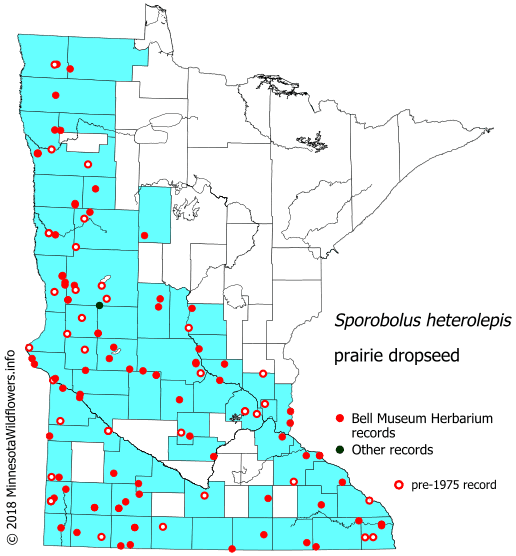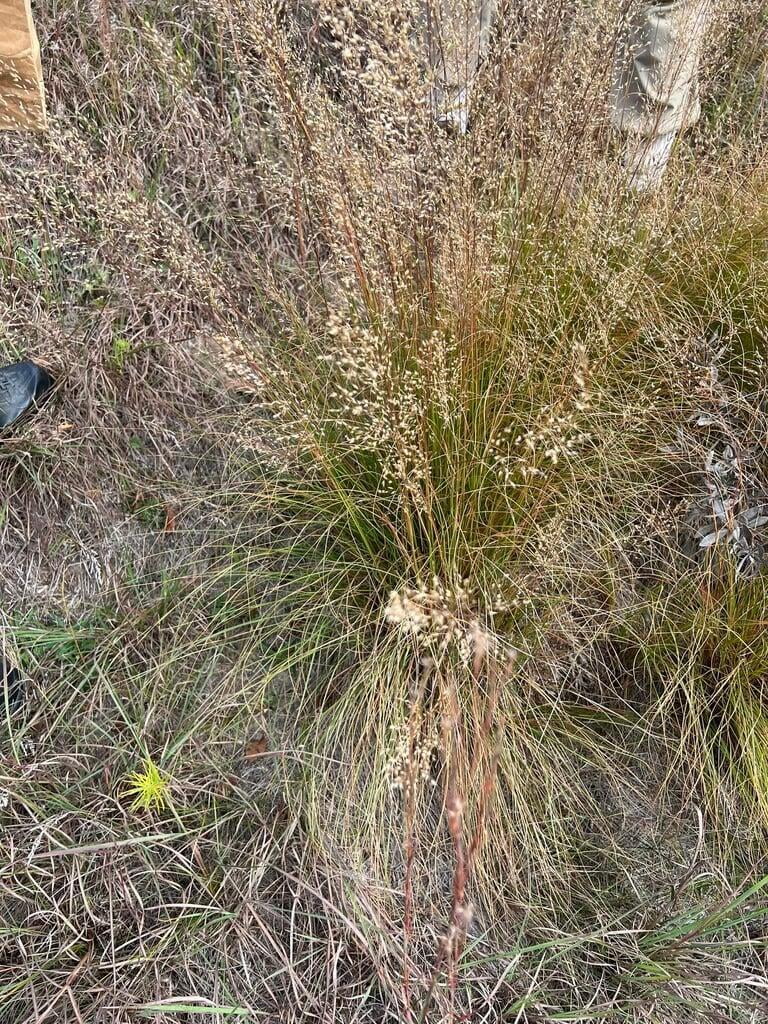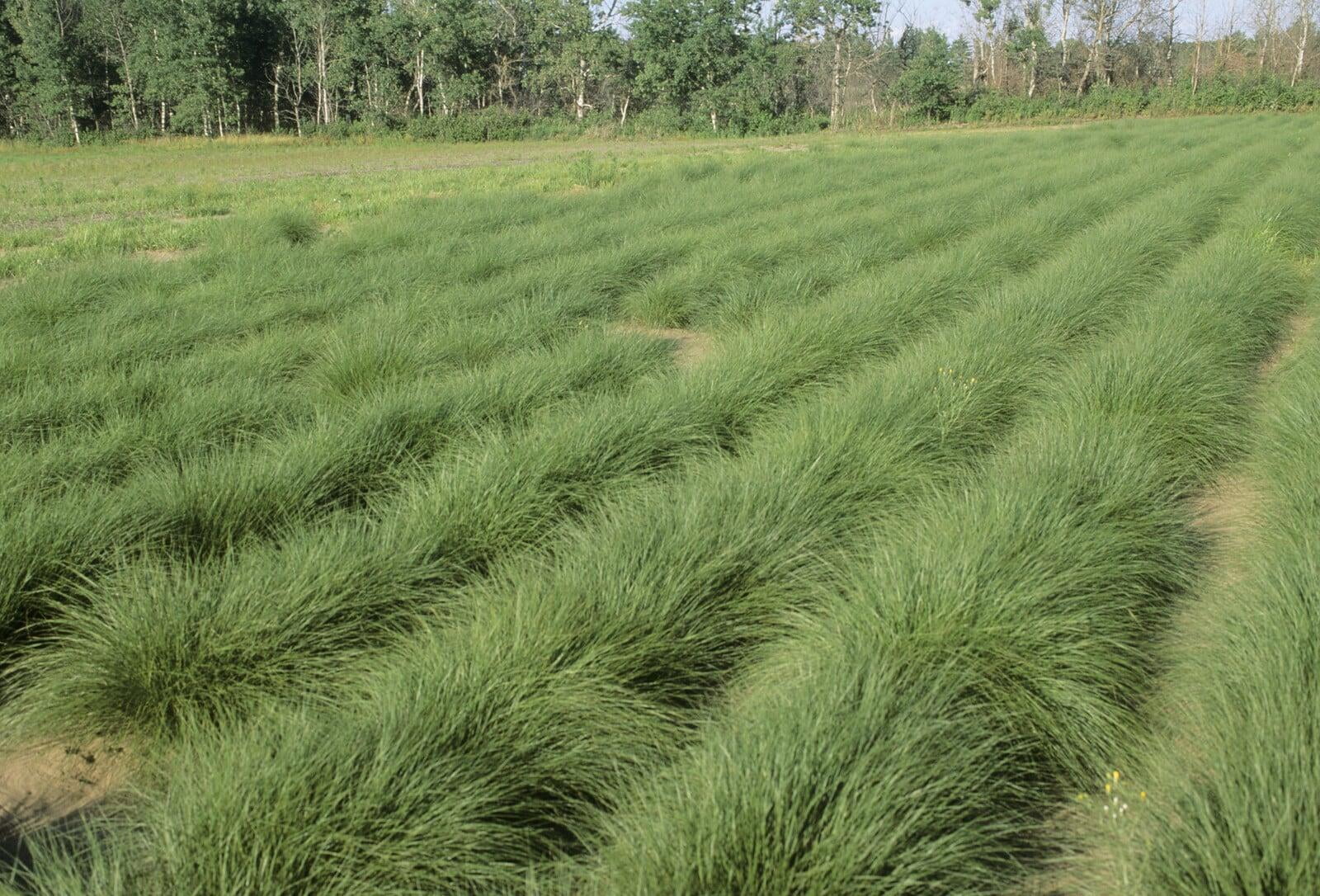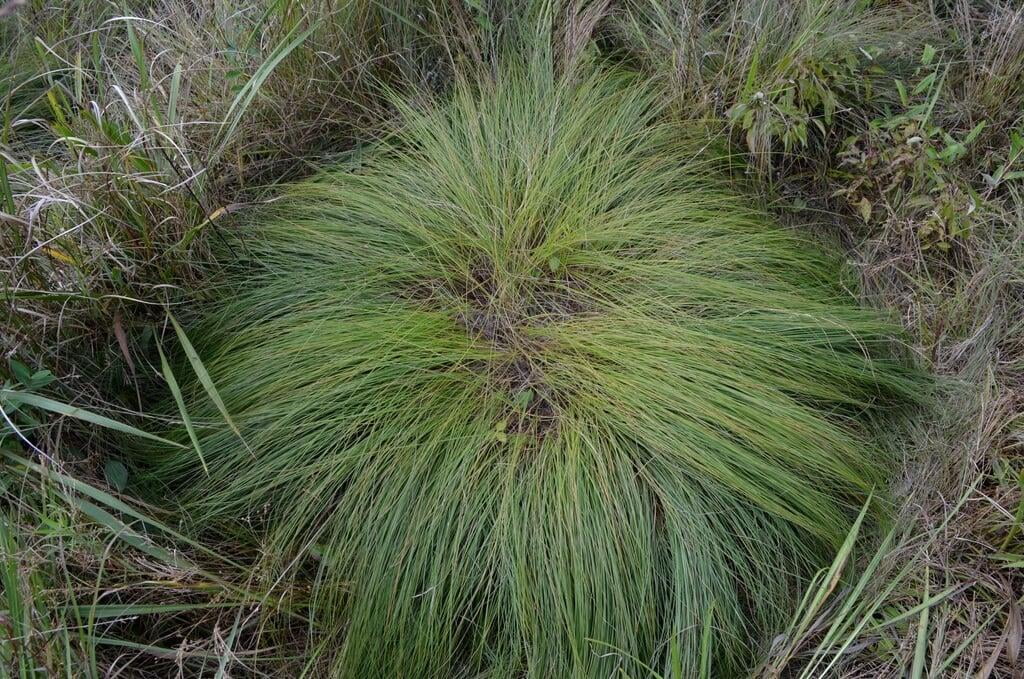Sporobolus heterolepis
Prairie dropseed Description:
Sporobolus heterolepis, commonly known as prairie dropseed, is a native grass species found throughout the central and eastern regions of North America. It is a warm-season, perennial grass that can grow up to 3 feet (1 meter) tall and forms dense, rounded clumps.
The plant has thin, wiry leaves that are green or blue-green in color and grow up to 2 feet (60 cm) long and 0.1-0.2 inches (3-5 mm) wide. The leaves have a fragrant, sweet smell when crushed. In late summer, prairie dropseed produces tall, arching stems that bear clusters of small, fluffy, pinkish-brown flowers. The flowers give way to seedheads that persist into the winter.
Sporobolus heterolepis is a valuable grass for landscaping, as it is a low-maintenance and drought-tolerant plant that requires little watering or fertilization. It is also an excellent erosion control plant, as its dense root system helps to stabilize soil and prevent erosion. Prairie dropseed provides habitat and food for a variety of wildlife species, including birds and small mammals.
In addition to its practical uses, Sporobolus heterolepis is a popular ornamental grass due to its delicate, airy appearance and sweet fragrance. It is often used in prairie or meadow gardens, mixed borders, and rock gardens. Overall, prairie dropseed is a versatile and attractive plant that is well-suited to a variety of landscaping and ecological applications.
Native Range:
Prairie dropseed is found predominantly throughout the central United States but its range extends to some East coast states.
Standard Plant Information:
Plant height: 1' - 3'
Bloom time: August - October
Preferred habitat: Does well in full sun and moist to dry sandy or gravelly soil. Often found in prairies and rock outcrops.
Sowing:
For most homeowners, the best option is to scatter seed on the ground by hand broadcasting at a minimum of 15-16 pls lbs per acre. For even coverage, we recommend that you broadcast seed in perpendicular rows across the site to ensure even coverage.
Planting:
Simply dig a hole in the soil slightly larger than the plant’s roots. Ensure that the soil line of the plant is maintained during the transfer (i.e. the plant should be at the same level with the ground as it was in the pot). Pack any loose dirt back around the plant and make sure you water it well the same day to ensure it has the best chance of survival.









